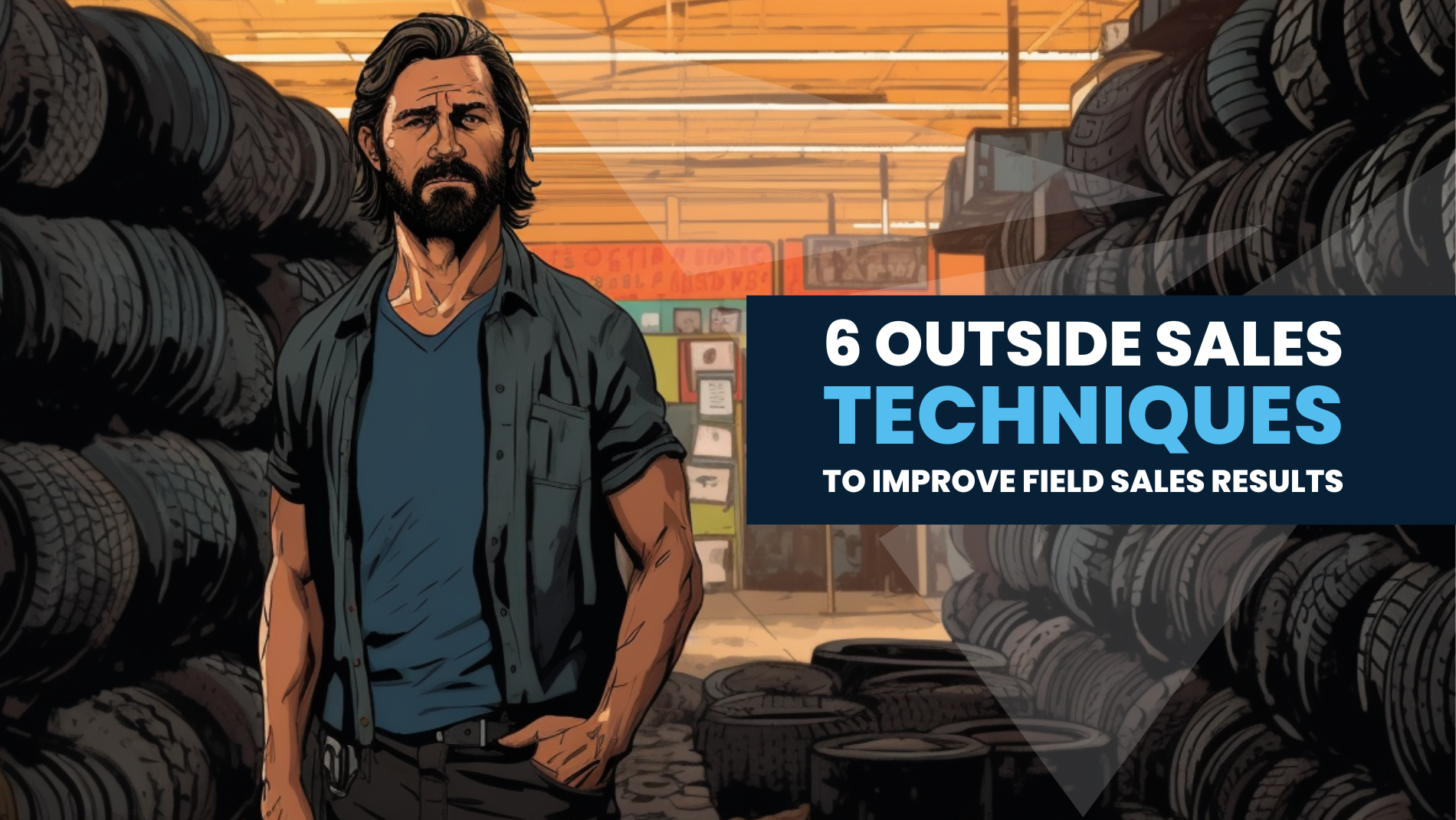Field Sales Prospecting Strategies: Tips to Boost Your Sales Results
Field sales prospecting strategies are an essential part of any sales process. They involve the process of identifying, qualifying, and nurturing...
3 min read
Andrew Johnson
Jan 24, 2025 4:06:49 PM
Your parts department sells quality products at competitive prices. Your counter staff knows their stuff. Your outside sales team has years of experience. Yet, something's still eating away at your revenue — and it's hiding in plain sight.
The culprit? Poor follow-up.

Picture this: A fleet maintenance manager calls your sales rep about a turbo they need for a truck. Your rep promises to check stock and get back to them. But between other calls, deliveries, and customer visits, that follow-up slips through the cracks.
The customer, facing pressure to get their truck back on the road, calls your competitor. Not only do you lose that $2,500 turbo sale, but now that competitor has a foot in the door with your customer.
This scenario plays out daily across parts departments. Each missed follow-up creates ripples that can turn into waves of lost business.
Industry research shows dealerships lose approximately 12% of potential sales each month due to poor follow-up and communication. For a parts department doing $1 million monthly, that's $120,000 in lost revenue — nearly $1.5M annually walking out the door.
But the real cost goes deeper than just the immediate sales missed.
When customers can't count on timely follow-up, they start questioning your reliability. That parts manager who waited hours for a quote? They're already building relationships with other suppliers as backup.
Every missed follow-up on a parts query is potentially a missed service opportunity. That customer asking about brake components might have been ready to schedule preventive maintenance across their fleet.
In the tight-knit world of commercial trucks, word travels fast. One customer's frustration with poor follow-up becomes a story shared at industry events and fleet maintenance meetings.
It starts slowly: customers test other suppliers for urgent needs, then gradually shift more business away. By the time you notice the revenue drop, it's often too late to win them back.
Your marketing team generates leads and opportunities. But without quick and consistent follow-up, marketing leads go cold, and customers buy elsewhere.
Today's parts market offers little room for differentiation on products or pricing alone. OE parts are OE parts, and everyone has access to similar aftermarket lines. Price matching is common.
What sets winners apart isn't just having the right part or the right price — it's reliability, responsiveness, and follow-through. When a customer knows your team will respond quickly and consistently, price becomes less critical in their decision-making.
In his book The Effective Executive, Peter Drucker describes a juggler who, despite their expertise, can only keep balls in the air for about 10 minutes before inevitably dropping them. This perfectly illustrates how parts sales teams try to juggle customer information. You can only track details mentally for so long before something important gets dropped — costing you deals, disappointing customers, and losing revenue.
Capturing and effectively using sales call information is critical to success in parts sales. Here's a proven framework called REAL that helps teams track what matters:
We've all written short notes like "Talked to Bill about turbos, follow up next week," hoping to remember that it actually means "Bill needs quotes on three DD15 turbos by Tuesday, needs core return process explained, and wants technician training scheduled for his team of five." Good notes should remember these details for you, capturing the complete who, what, why, when, where and how of every commitment.
Parts quotes and customer commitments outlast any paper notebook. Your team needs instant access to their complete history with each customer — past conversations, quotes and promises. Having everything in one searchable place saves time and prevents costly oversights.
Vague notes like "LM, F/U Wed" don't drive results. Compare that to: "Left message about Q4 filter promotion. Bill's voicemail says he's back Tuesday — calling Wednesday, 9 a.m. to review quotes. Asked Steve to send samples ahead of call." Detailed, actionable notes lead to closed deals.
Don't just write off challenging sales situations. Instead of noting, "Too expensive for Customer X," capture: "Price 10% high, but customer very interested if we can split freight costs — following up with vendor on program pricing." These details turn potential losses into wins.
The goal is to stop juggling and start systematically capturing information. Your team needs a simple way to record and use customer interactions to drive sales growth.

Field sales prospecting strategies are an essential part of any sales process. They involve the process of identifying, qualifying, and nurturing...

Every field sales team has a number of challenges to overcome—and not all of them are external.

Sales professionals take notes in varied ways, each with varied levels of success. And every one of us has felt the bite of important notes that get...